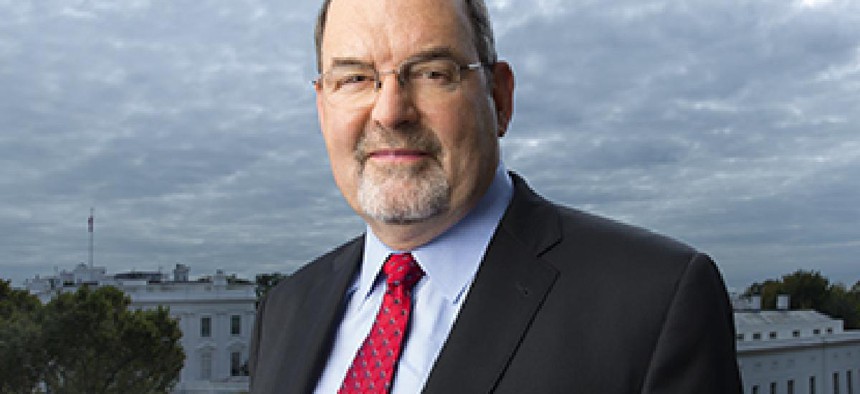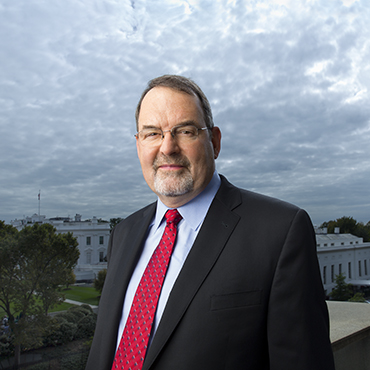The IT leadership that agencies need

FITARA has raised the bar for what's expected of agency CIOs, and efforts are underway to make sure the government hires accordingly.

Federal CIO Tony Scott (above) has said that the Office of Management and Budget is working on a new job description for federal CIOs
The federal CIO community has a bit of a problem.
The Federal IT Acquisition Reform Act gives agency CIOs significantly more authority and appears to be gaining traction that the Clinger-Cohen Act's reforms never managed. But with that authority come substantial new responsibilities, and those responsibilities call for skills that some CIOs might not have.
That's not a knock on the individuals themselves; the job has changed dramatically while they were in it. But the fact remains that, for FITARA to be effective, agency CIOs will need to bring some additional tools to the table now that Congress has mandated that they have a seat at it.
U.S. CIO Tony Scott acknowledged as much at a recent event on FITARA implementation. The Office of Management and Budget is working on a revised job description that could serve as a template for CIO jobs across government as part of "a whole series of things [that] are really pointed at that question," he said.
"I do think it’ll take a different kind of person than maybe what we’ve traditionally [considered]," he added.
Richard Spires, who served as CIO at the IRS and the Department of Homeland Security, told FCW that Scott's comments were an important recognition of the skills gap.
"Some agencies, I know -- I know for a fact -- are not being as aggressive as the law says they should be," said Spires, who is now CEO of Learning Tree International. "They don’t feel that they have, either in their own skill set or their team’s skill set, the ability to do some of these things well yet. And so you’ve got this dynamic that the very people we’re empowering in some instances are not feeling that they’re able to step up to the job."
Dan Chenok, executive director of the IBM Center for the Business of Government, told FCW that although he couldn't speak to the specific efforts Scott mentioned, he agreed that today's CIOs must have an impressive array of skills.
"In a networked world, where analytics are the order of the day in terms of what drives decision-making, the ideal CIO has an understanding of the effects of modern technology, a way to translate that into strategy for the organization and a way to communicate that strategy to their colleagues who are the users of the technology," Chenok said.
He added that it's the CIO's job to ensure that other agency leaders "understand why it is that investing in a certain approach to modernization and security is going to be important to get them to achieve their business objectives."
OMB did not respond to FCW's requests for more detail on the revamped job descriptions. But the Obama administration has been working with some of the Partnership for Public Service's Strategic Advisors to Government Executives -- a roster of former federal executives who provide a highly experienced sounding board -- to craft position descriptions and performance plans that reflect the government’s expectations.
Identifying specific targets for recruitment has not been the focus, but Scott and his team have bounced occasional names off the SAGEs that have been suggested by others as potential hires.
Formally changing CIO job descriptions, however, is a long and complicated process. Every agency is different, and the scope of CIO responsibilities can vary significantly. Certain positions, such as the Department of Veterans Affairs' assistant secretary for information and technology, were established by statute. And because a central tenet of FITARA is improved partnerships across the C-suite, revamped CIO jobs have implications for chief financial officers and chief acquisition officers.
All that must be hashed out through departmental approval chains and run past OMB and the Office of Personnel Management. The next administration's Office of Presidential Personnel might also have thoughts on the matter. Official changes, in other words, could take awhile.
But there are other options. The CIO Council's IT Solutions Challenge -- a 2015 initiative that asked six interagency teams to tackle big-picture federal IT puzzles -- was designed to identify next-generation IT leaders and help them develop the skills and relationships they would need in C-level roles.
And Scott said at the FITARA event that his office is "identifying roles that new leaders could come into and get the kind experience that you’d like to see as a precursor to taking on the CIO role."
Scott had no government experience before becoming U.S. CIO, but he had held a string of IT leadership jobs at General Motors, Microsoft, VMware and the Walt Disney Co.
"One of the things in my own development that I highly value," he said, "was the experience I got running operations, running development teams, working on strategy, doing a bunch of different parts of the CIO job, and really getting hands-on."
To provide similar seasoning, the government could create "a series of rotational assignments over a few years for our career people so that they get the kind of background and experience that you’d like to have," he added.
The idea of the CIO as full business partner is not new, of course. In a 2010 roadmap, the Partnership for Public Service noted that the Clinger-Cohen Act declares that "CIOs are responsible for providing advice and assistance to agency heads on IT acquisition and resource management; maintaining and facilitating the implementation of a sound and integrated IT architecture; monitoring performance of IT programs; using metrics to evaluate the performance of those programs; and modifying or terminating programs or projects, as necessary."
That law, however, was implemented ineffectively at best. And former Commerce Department CIO Alan Balutis echoed Spires' concerns about incumbents' aptitude. Balutis, who is now a distinguished fellow and senior director of Cisco's North American public sector, told FCW that a good number of CIOs still function as though they were directors of information resource management and charged primarily with keeping email and other internal systems up and running.
"It really wasn't that long ago that you heard CIOs out on the circuit talking about…managing the internal departmental management systems" but not being responsible for mission IT, Balutis said.
In his former job at Commerce, he added, that mindset would have meant "I would have no responsibility as CIO for the patent system modernization, for the decennial census, for the National Weather Service's satellite systems modernization.… That would take close to 90 percent of the IT spend in the department off the table because that would be mission IT."
"A lot of people either grew up into that [IRM director] role or were recruited into that role," Balutis said. "I’m not sure many of them are either capable of or interested in stepping up to be the kind of IT leader with acquisition and budget and, of course, [human resources] responsibilities that FITARA envisions."
He was quick to stress that several current CIOs -- career and political alike -- do have that interest and expertise. "I spent my career in government being a career person," he said, and "I do think there are very capable careerists, particularly in the next generation." But overall, it's a "mixed bag."
The FITARA-era CIO is "a difficult and more challenging role," Balutis said. "It puts you right in the line of fire and makes you responsible for major systems decisions."
CIOs finally have a seat at the proverbial table with the agency's top leaders, he added, "but that requires a different caliber [of] person who’s capable of and comfortable with being in that kind of setting."
Spires agreed. For large departments in particular, he said, "you should be demanding individuals who have a proven track record of doing that kind of work.... You can find individuals in government who have the right abilities and can do it. But you’ve got to find them. And you’ve got to be steadfast in doing it."
He added that the most critical factor might be the succession plan at OMB. There must "be cover and support from agency leadership and from OMB for these things to happen," he said.
The question of who will follow Scott as U.S. CIO is central, Spires said. "And I'd like to have a deputy director of management who has a real appreciation for what this stuff takes," he added.


